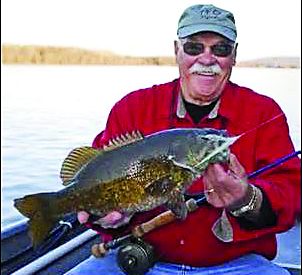
Bob Clouser
by Mike Buss, Virginia Coastal Fly Anglers
No matter your skill level or experience boating, you’ve crashed a dock at least once. Those with years of experience make it look easy. For boaters with single engine rigs, here are some tips that might make things go a bit easier.
• Few things are more frustrating than equipment failure. To minimize the chances, make sure your engine’s idling right, doesn’t stall at low speeds, and the shift mechanism is adjusted properly for smooth shifts.
• Come in slow, under steady power (no neutral). When it’s windy, high current and/or rough, never use neutral; only pause in neutral if it’s calm.
• On windy days, reduce your “sail area”…take the Bimini top down, for example, as it will catch the wind and make it easier to push you off course.
• If the wind is blowing you away from the pier, compensate by approaching towards the center or even the other side of the dock. If it’s blowing you toward the dock, leave extra room as you approach, so the wind can push you toward the dock without hitting it.
• An outboard or stern drive steers from the rear of the boat; inboards steer from the center. Outboards and stern drives steer more precisely in reverse; you’re actually directing the propeller thrust and drive unit—as opposed to an inboard, where you’re using a rudder to change direction.
• Practice at a deserted dock, much as you practiced driving a car in a deserted parking lot.
• Use only short, controlled bursts of throttle, and not overly excessive. Too little, and the wind and current will take over; too much and you’ll likely bump the dock.
• Ask for help. There’s no shame in asking your crew to stand by with fenders—warn them about catching hands and feet on the dock!
• Always turn the wheel just before applying power—not after, especially in tight quarters. You want the boat to go in the direction you’re aiming it.
• Approach the dock at a slow forward idle, aiming the bow at a slight angle in. As you reach the parking spot you’re after, turn the wheel toward the dock and shift smoothly to reverse, which brings the stern around neatly toward the dock.